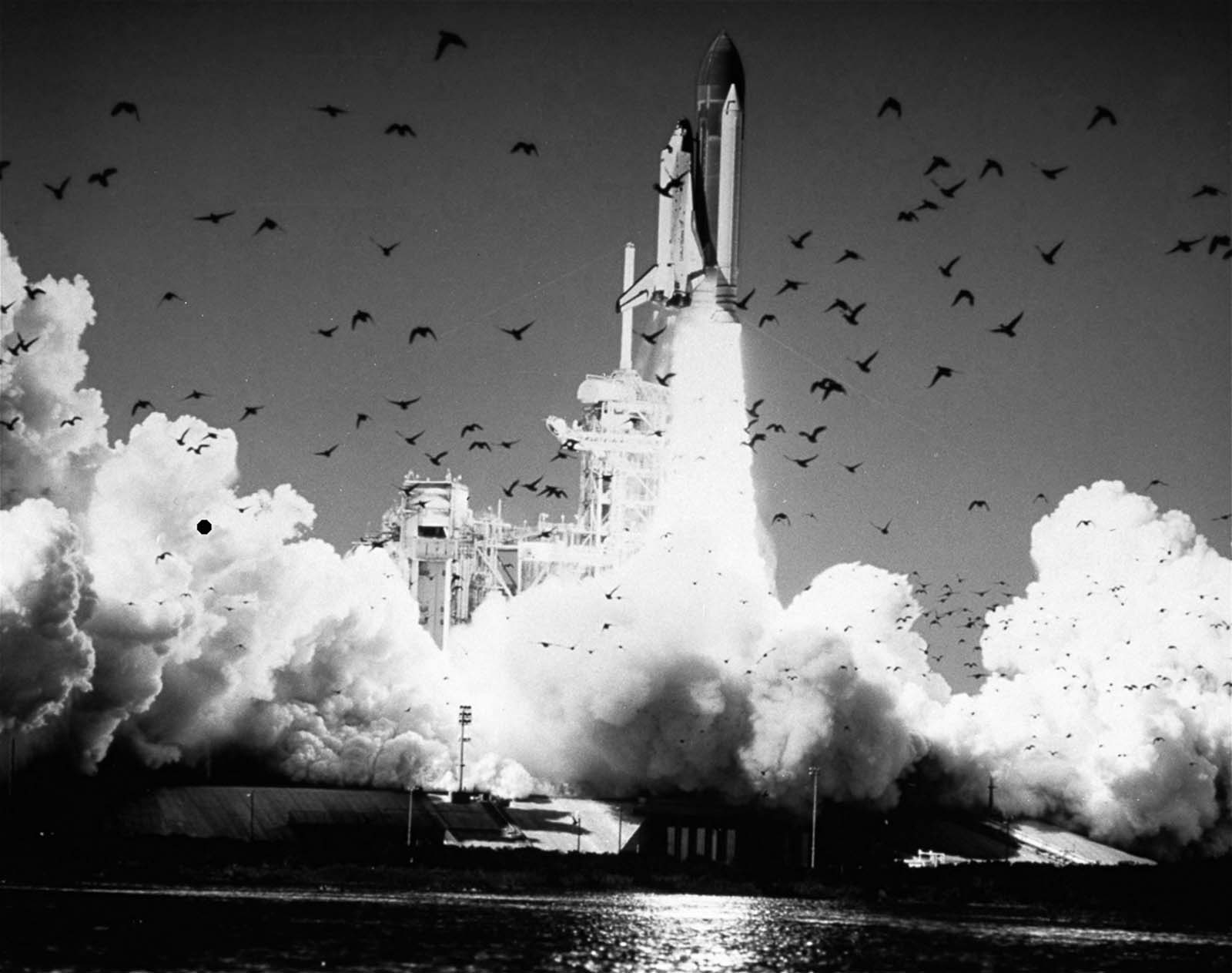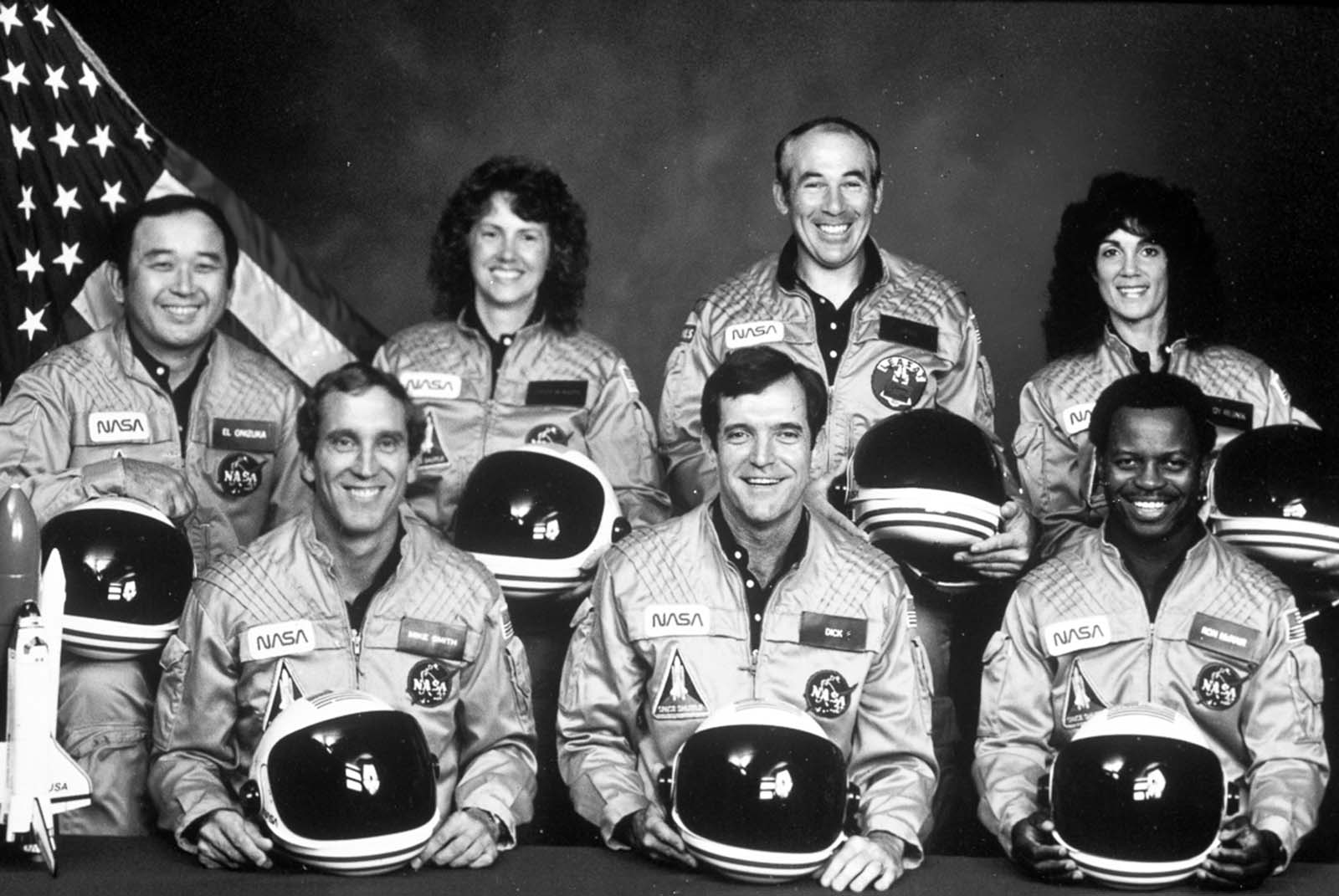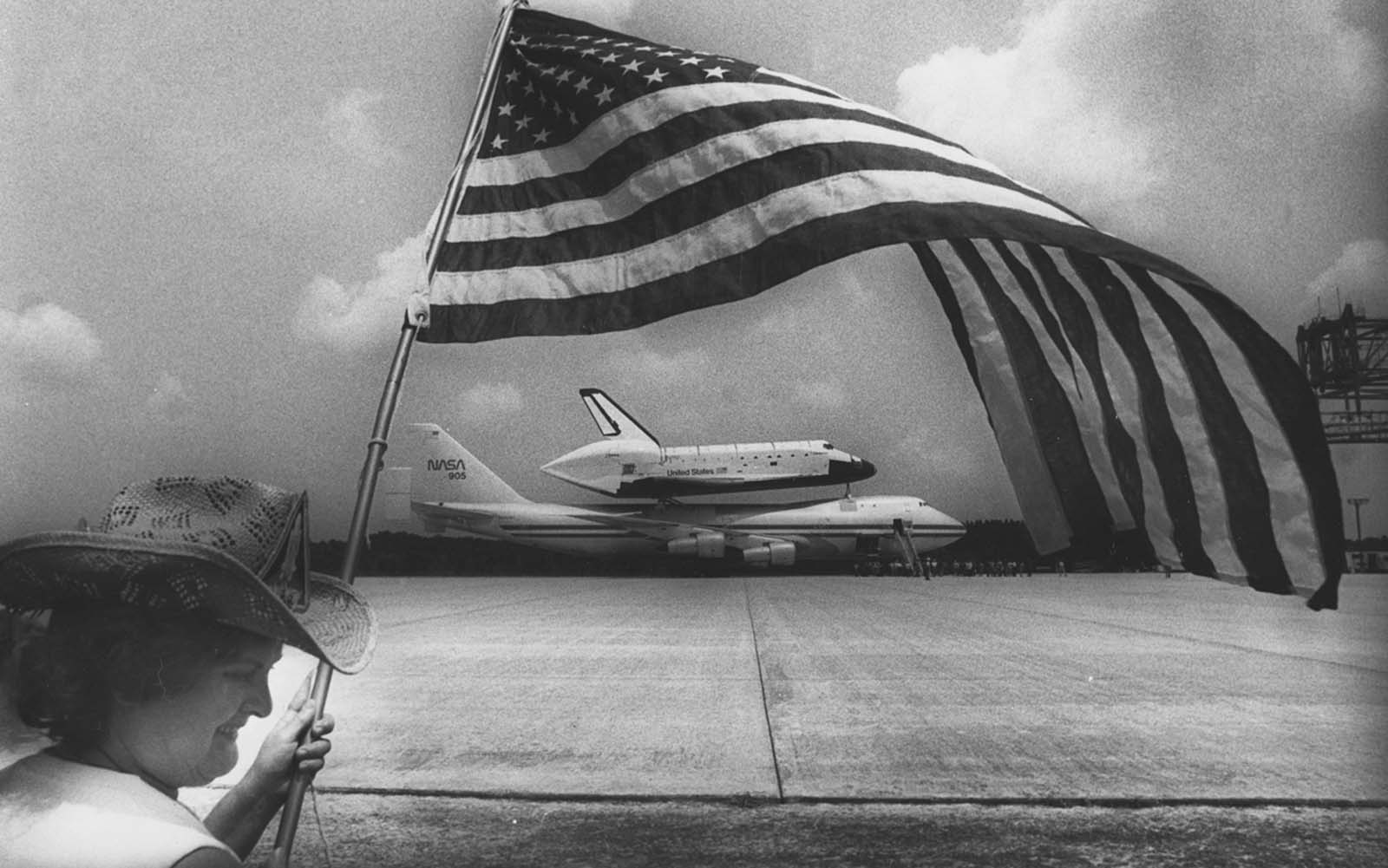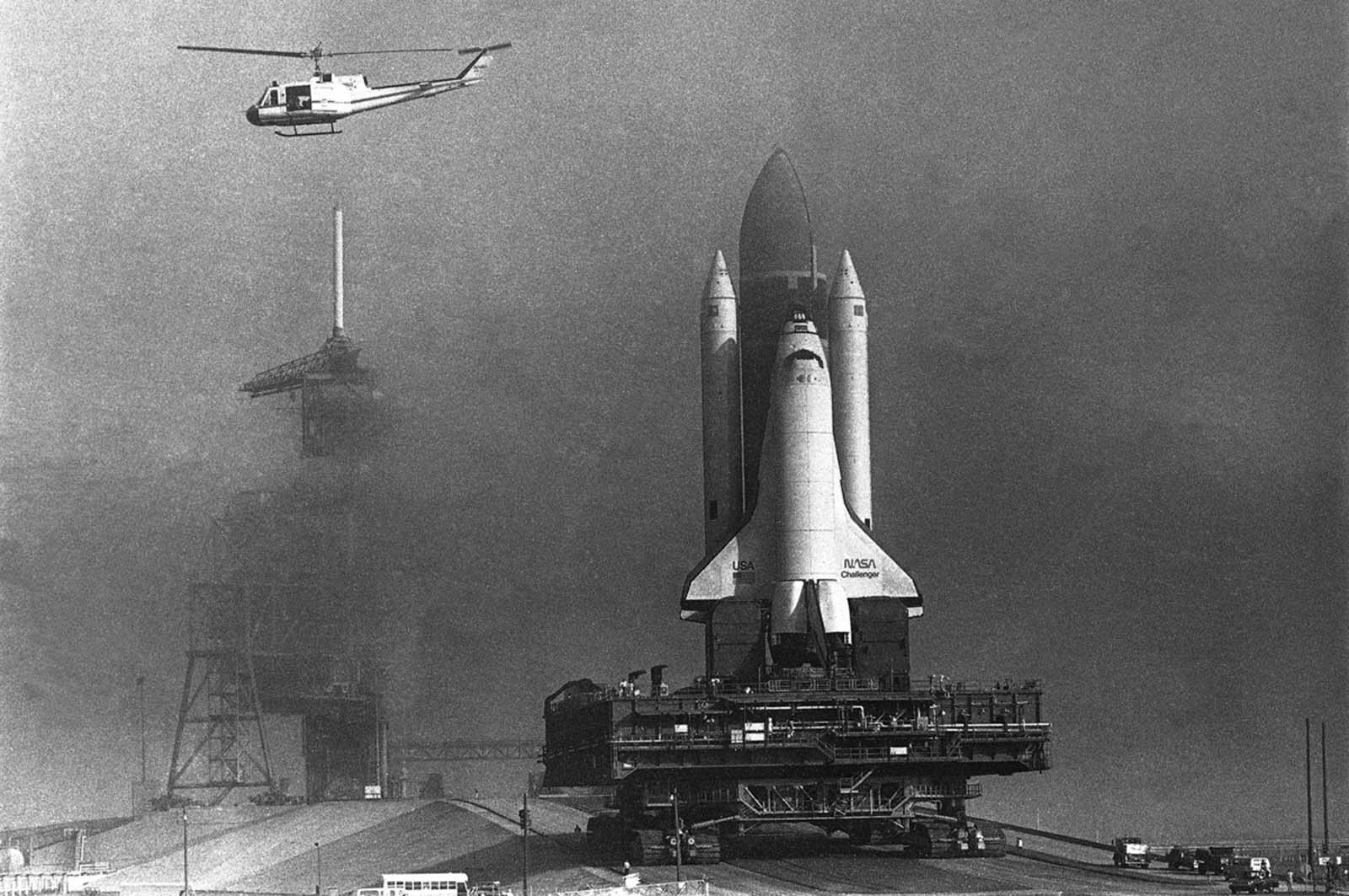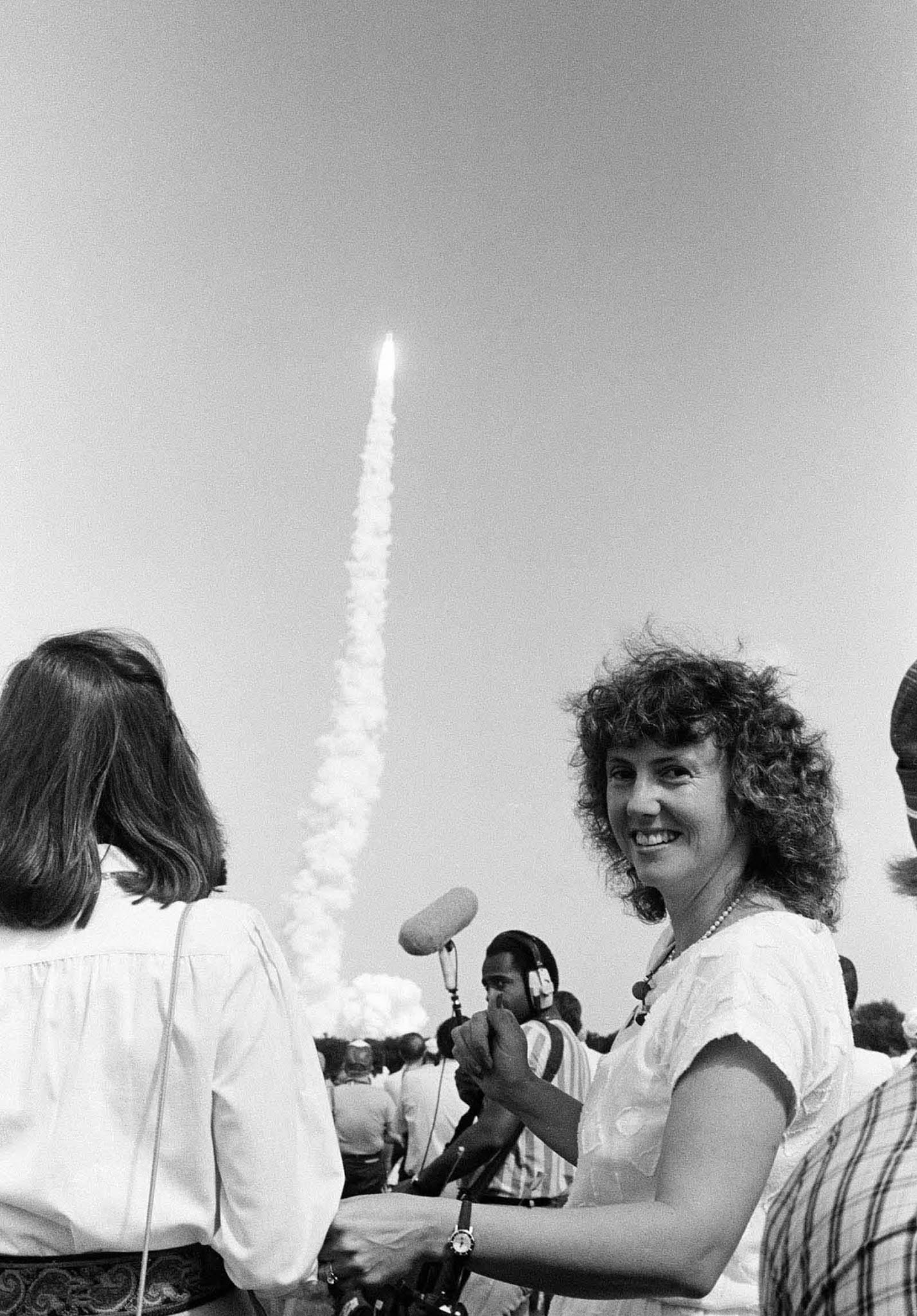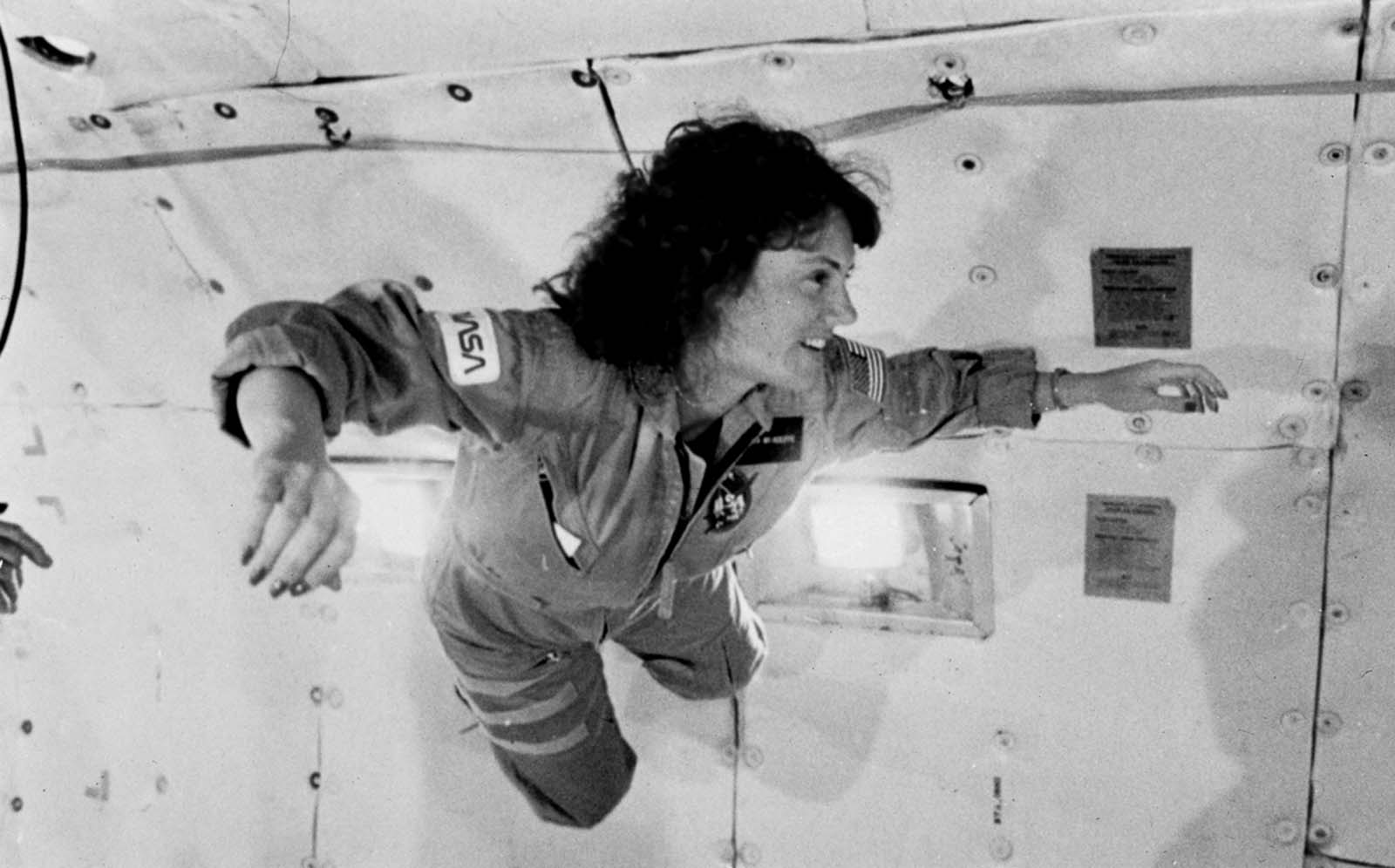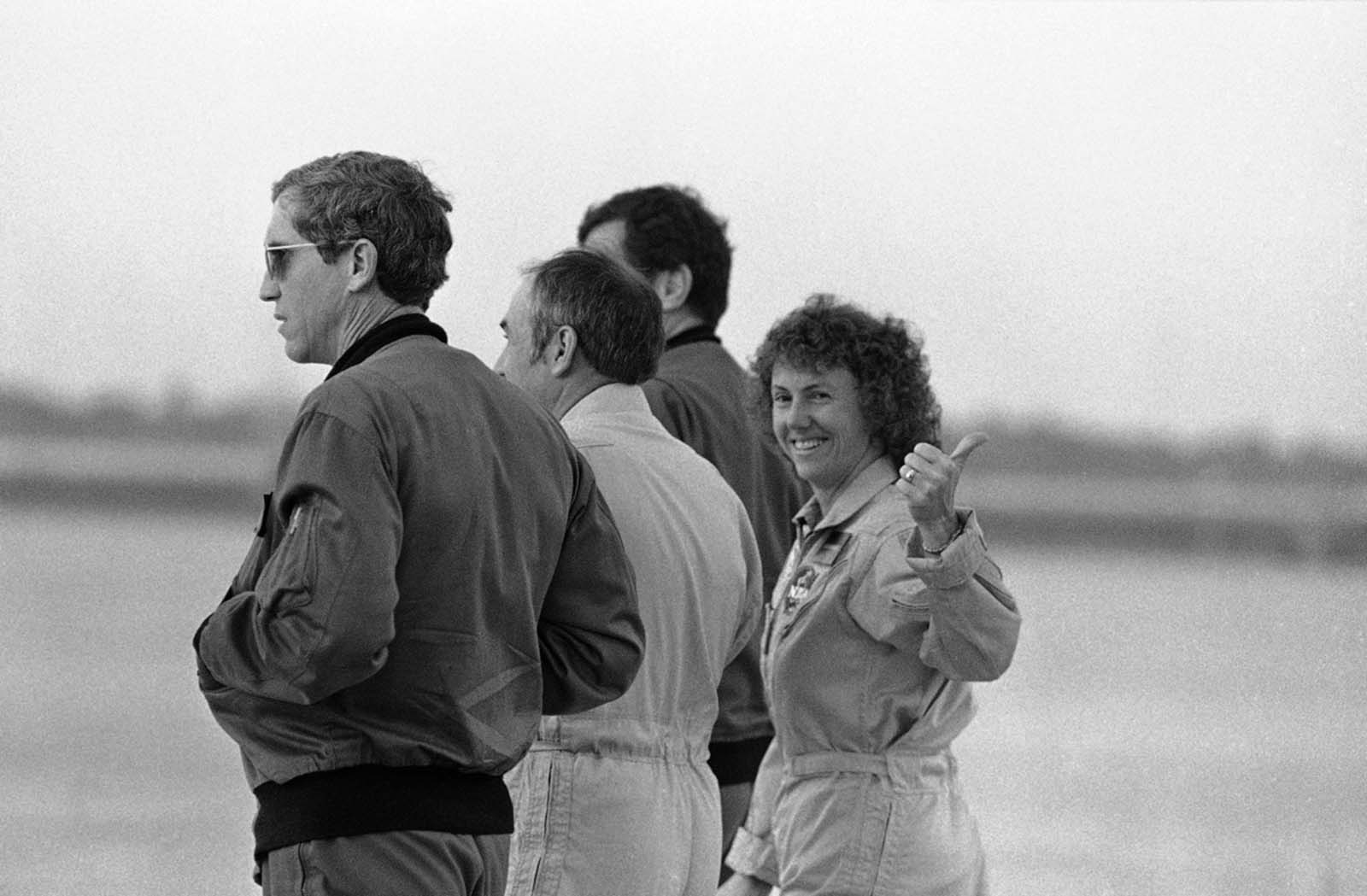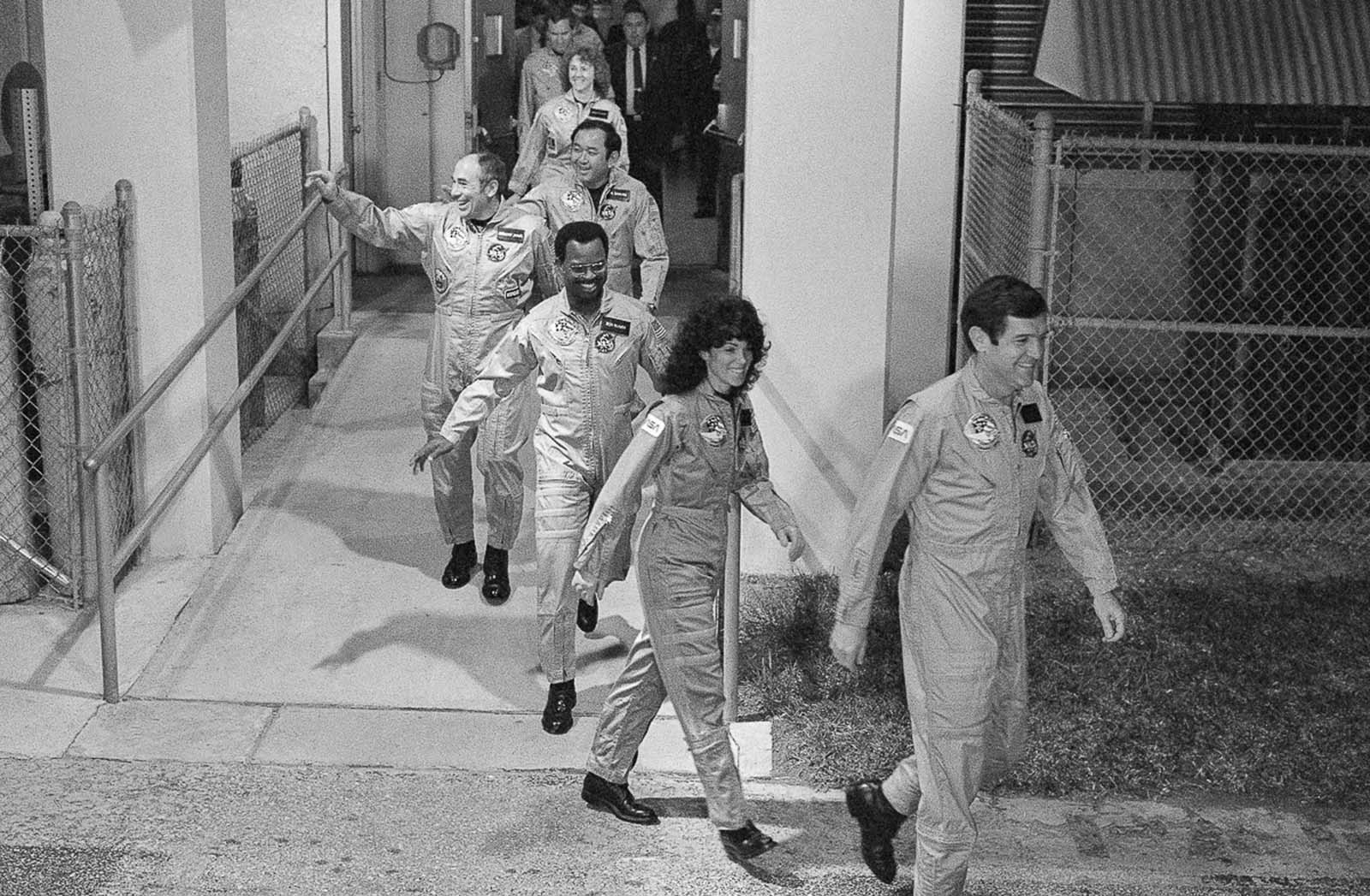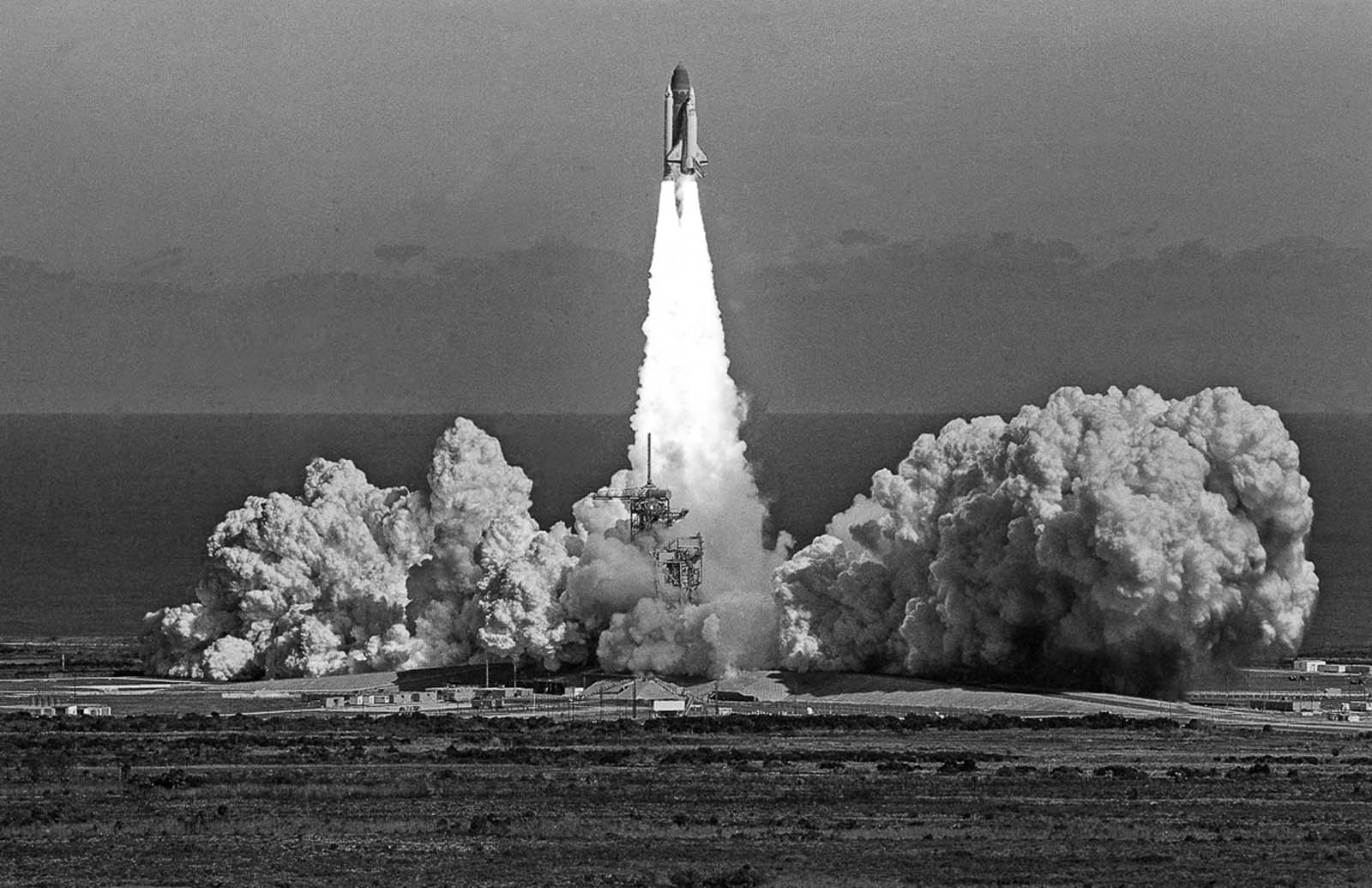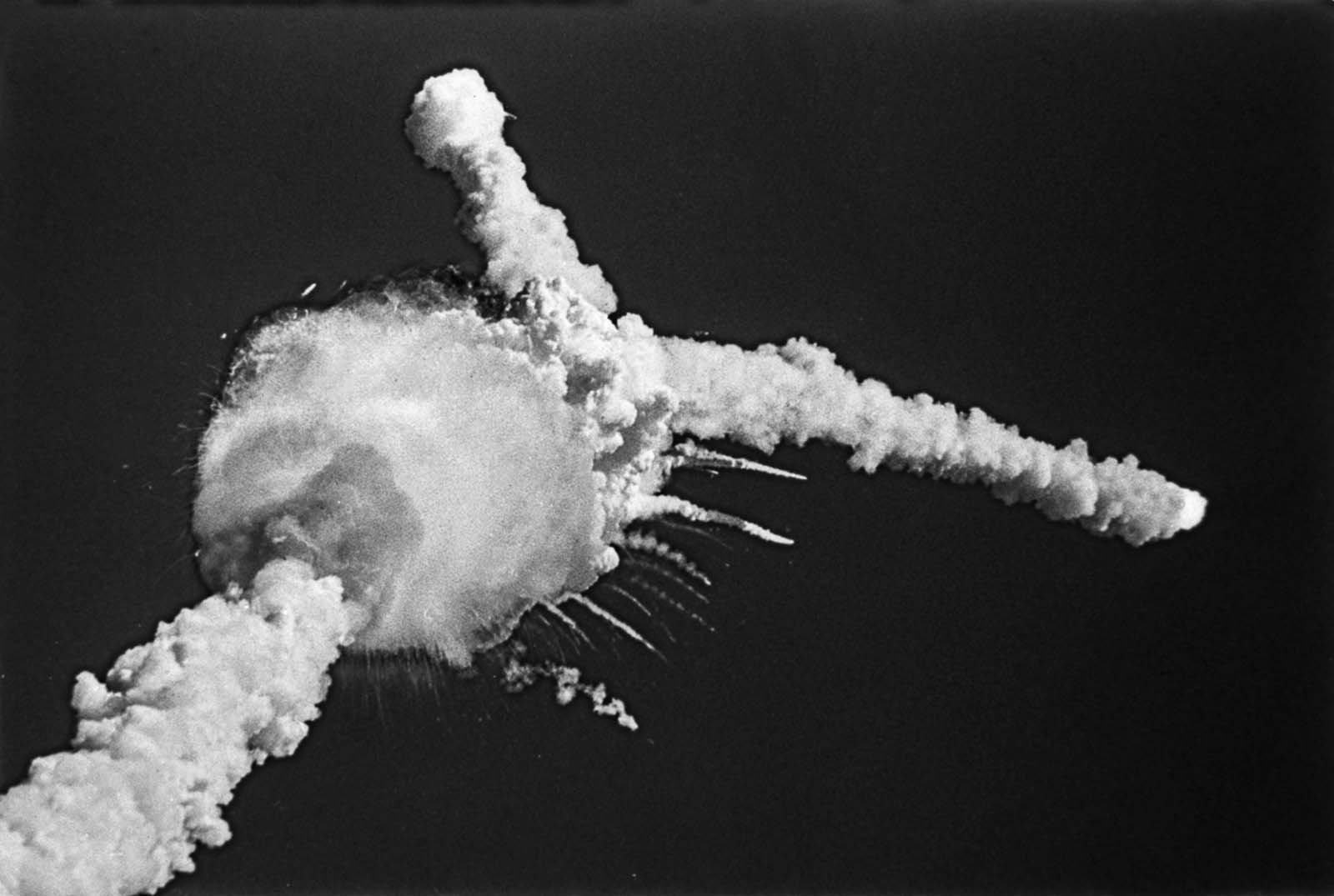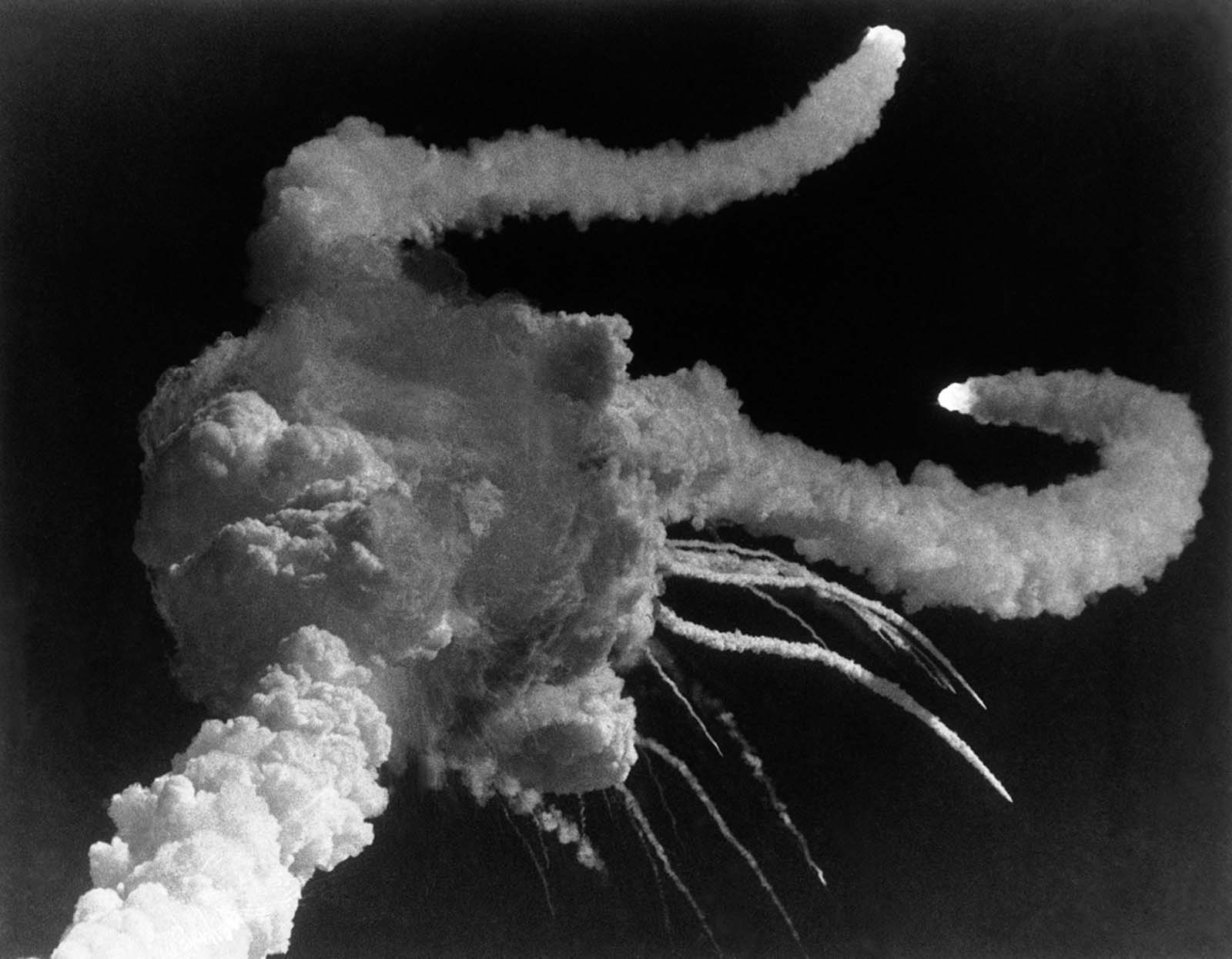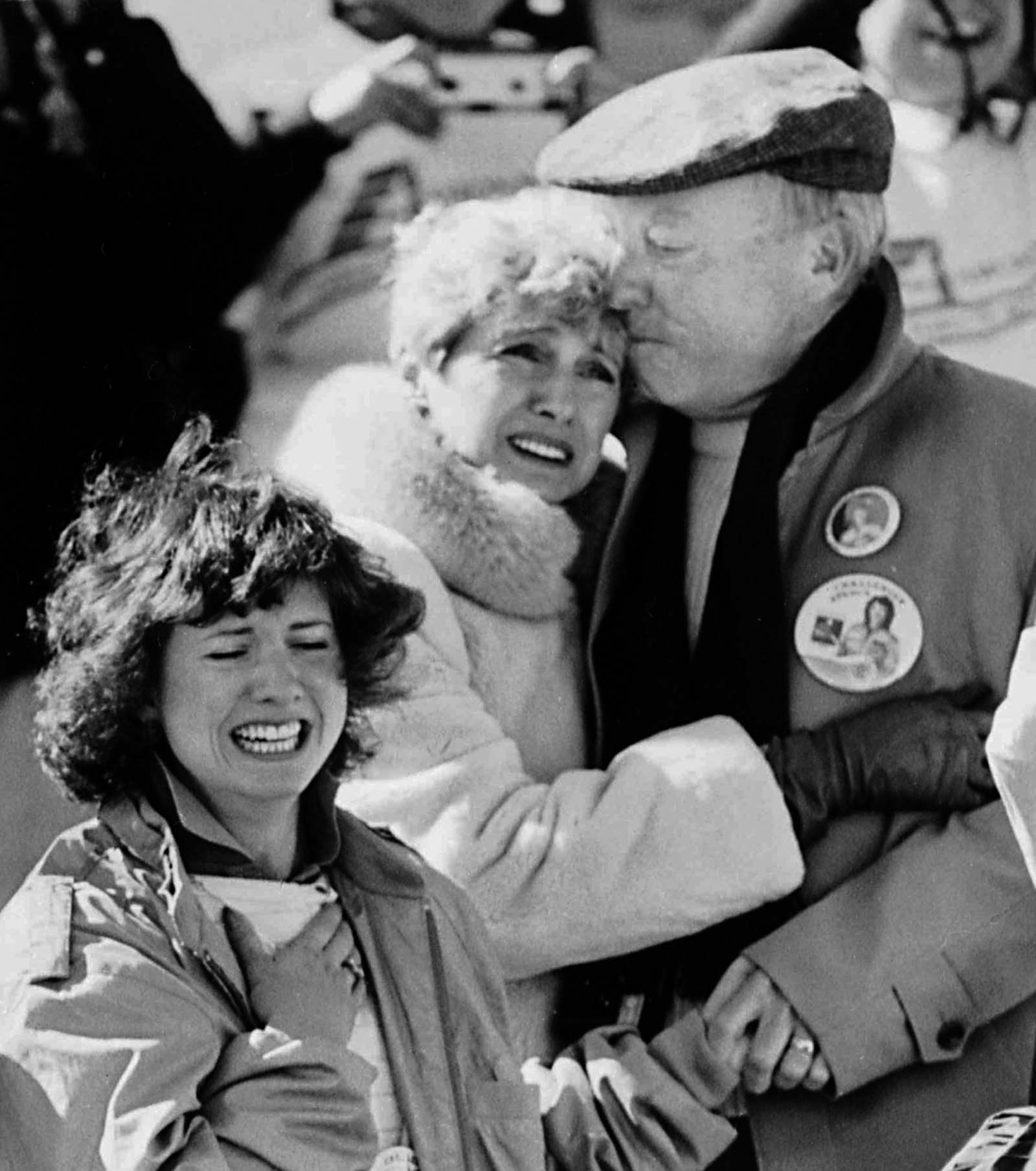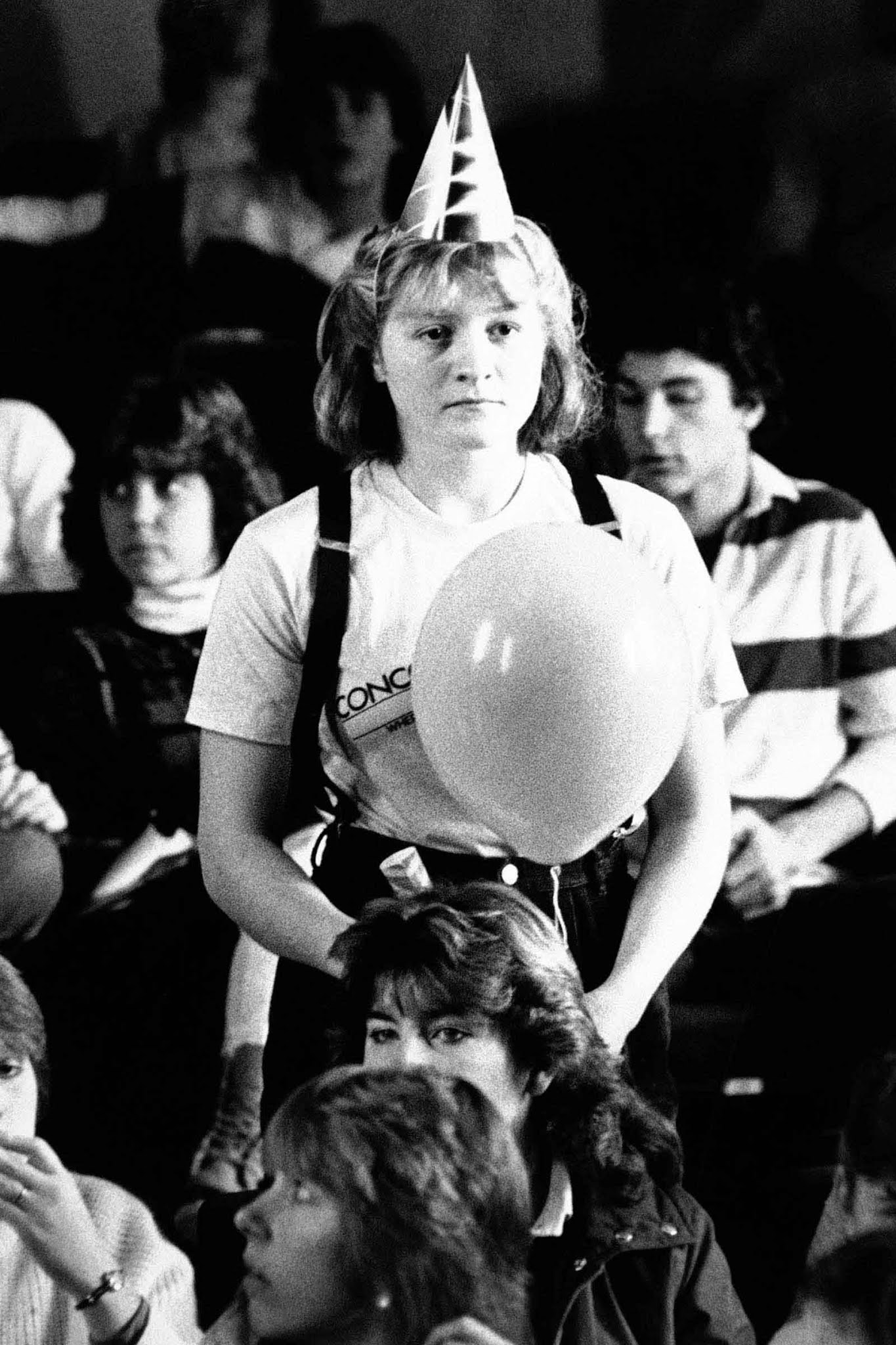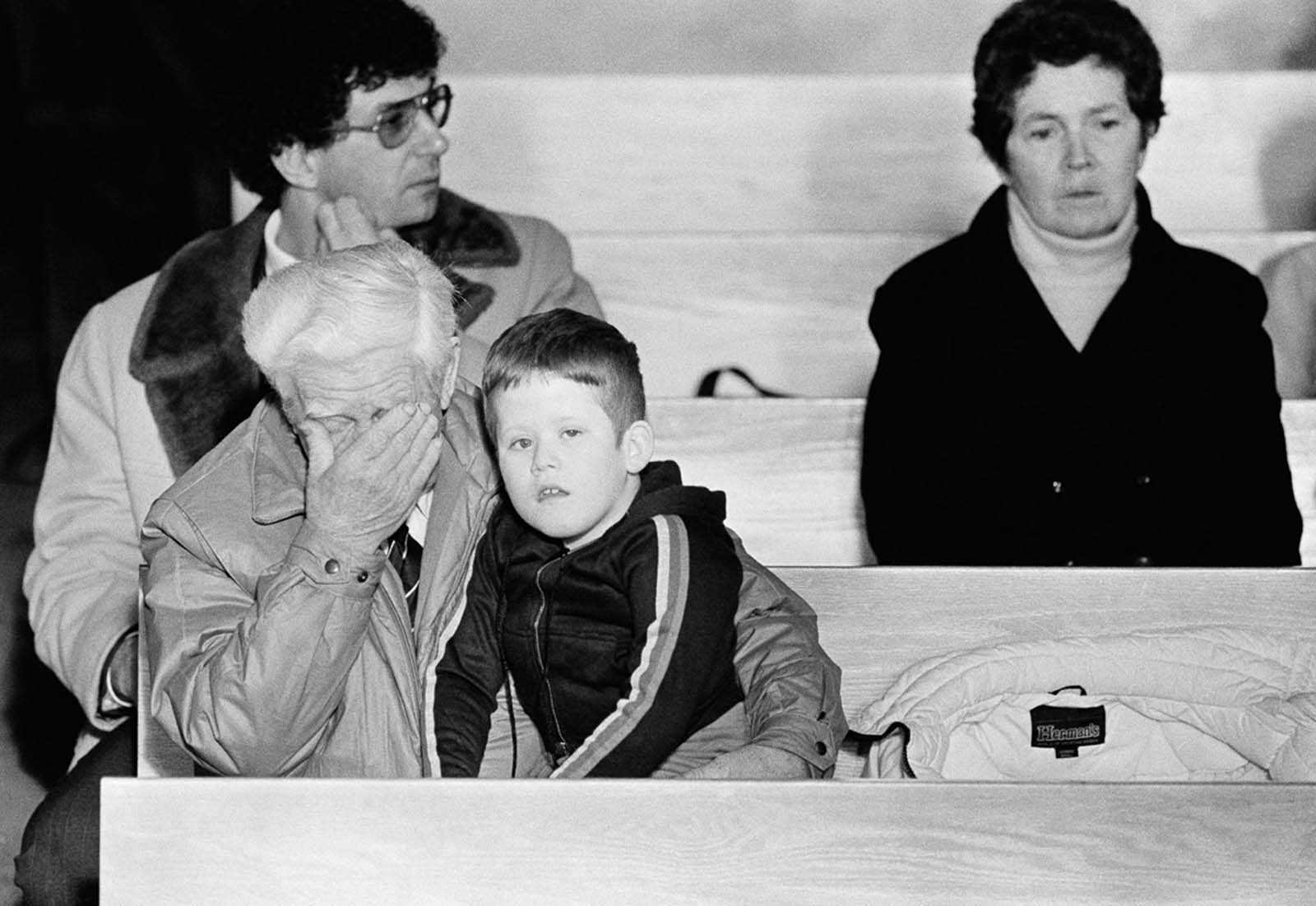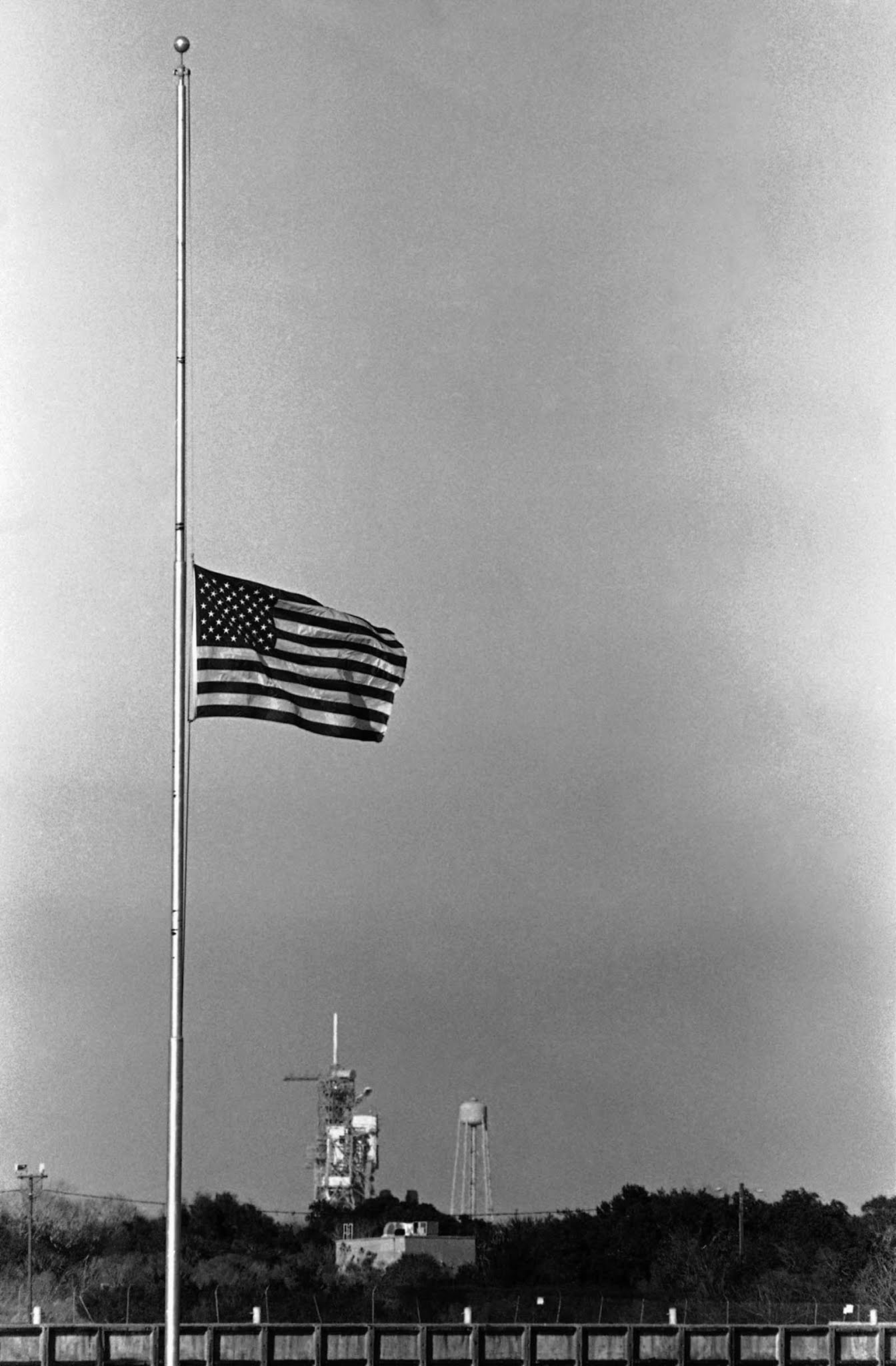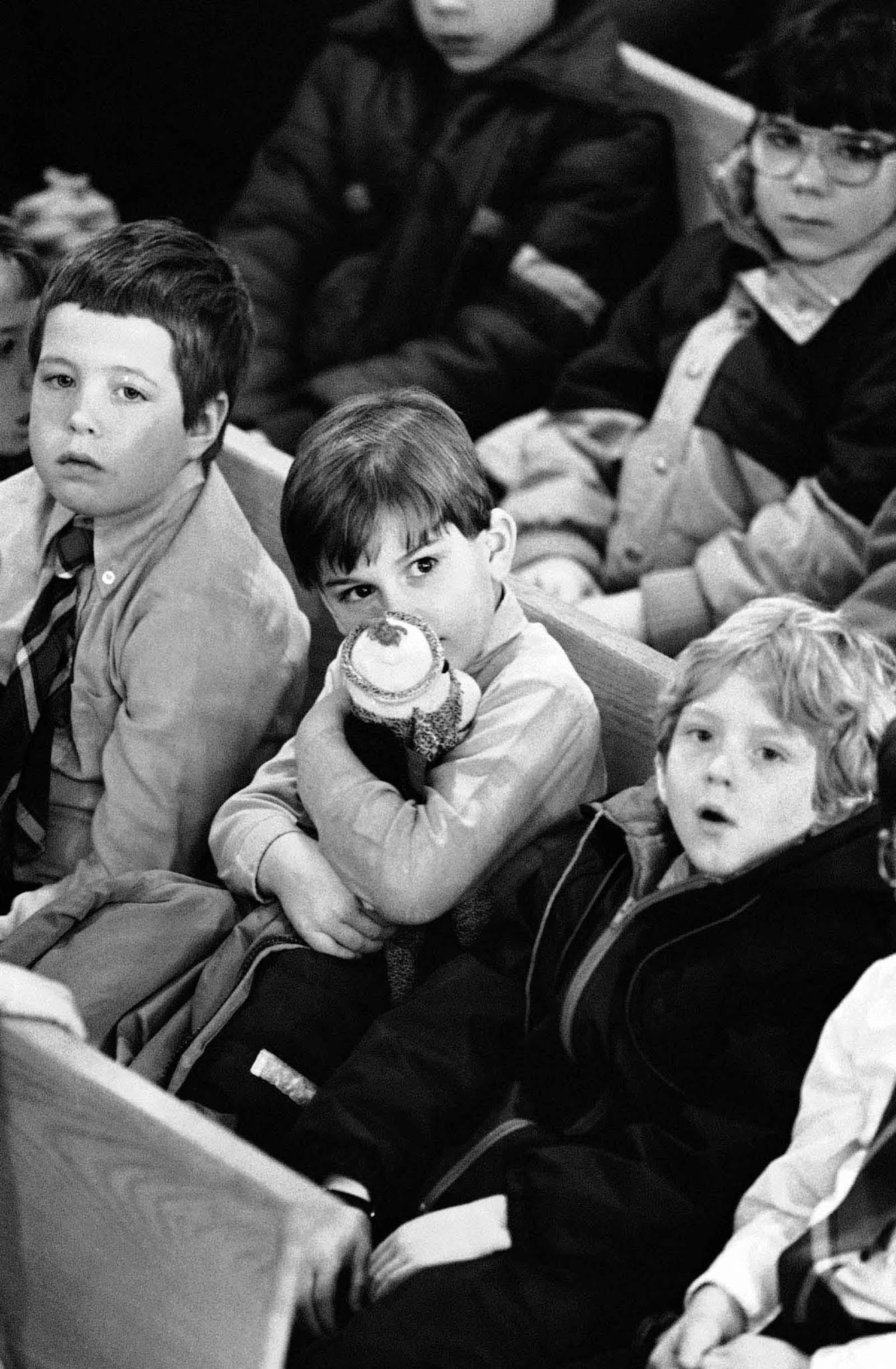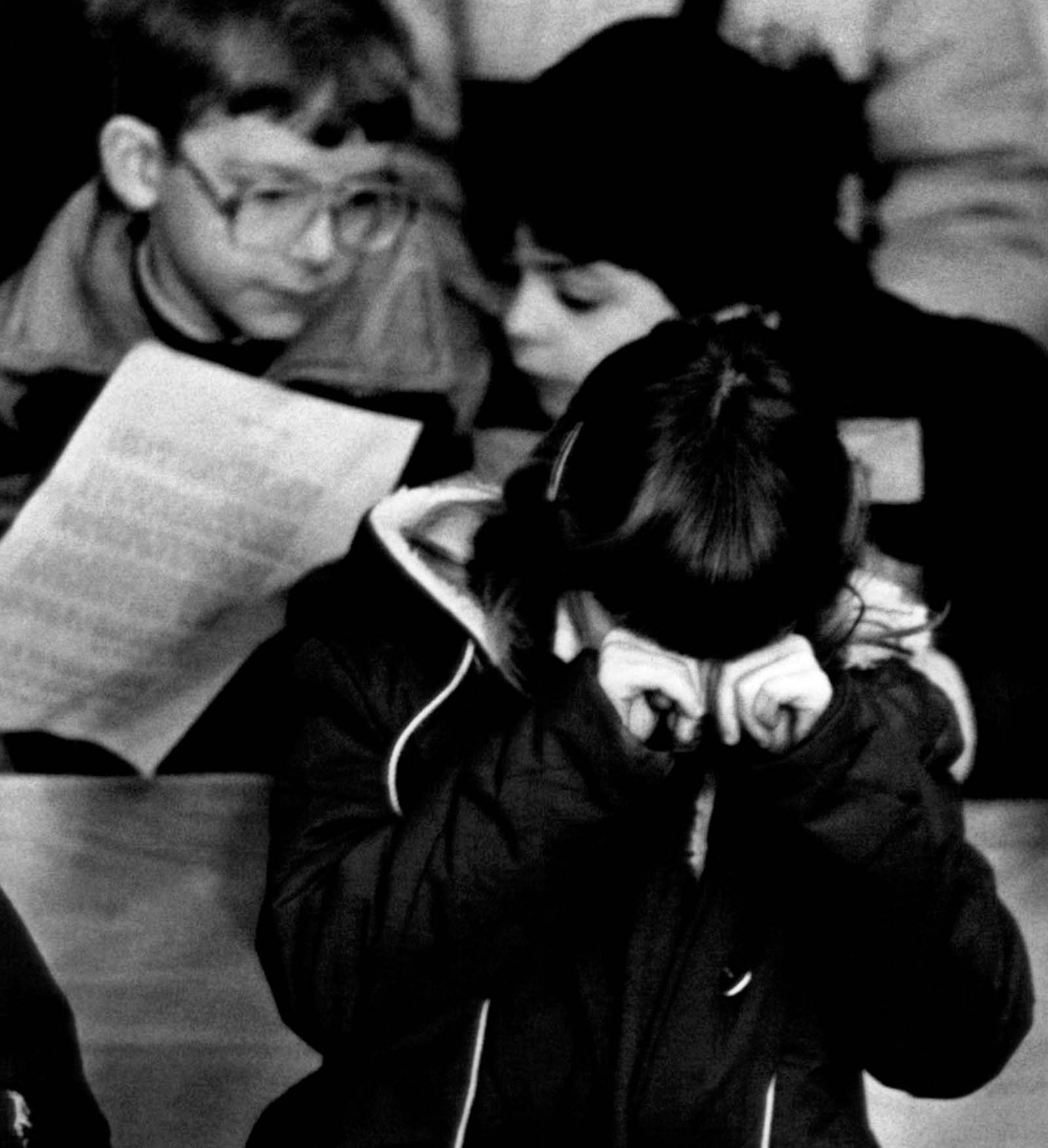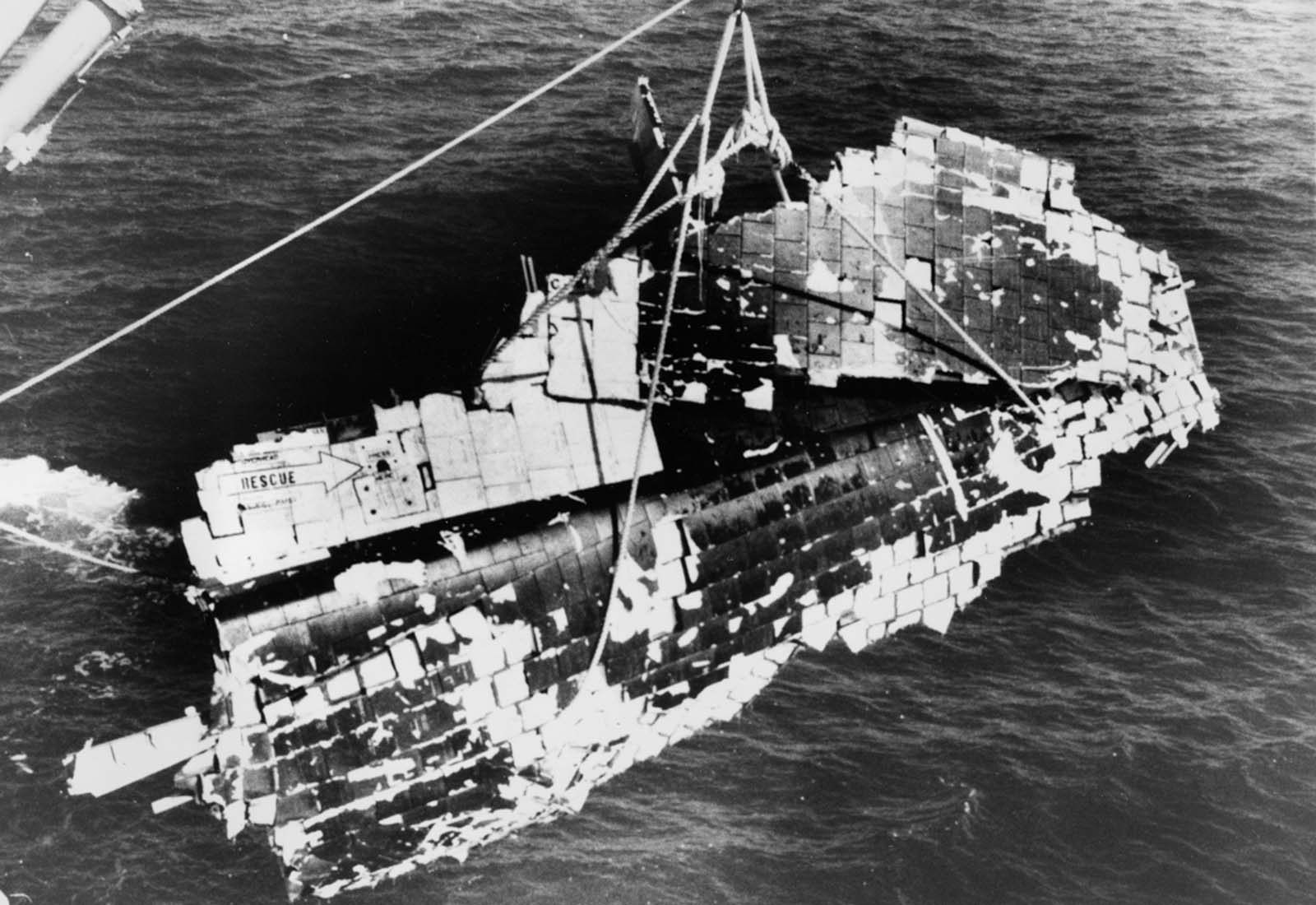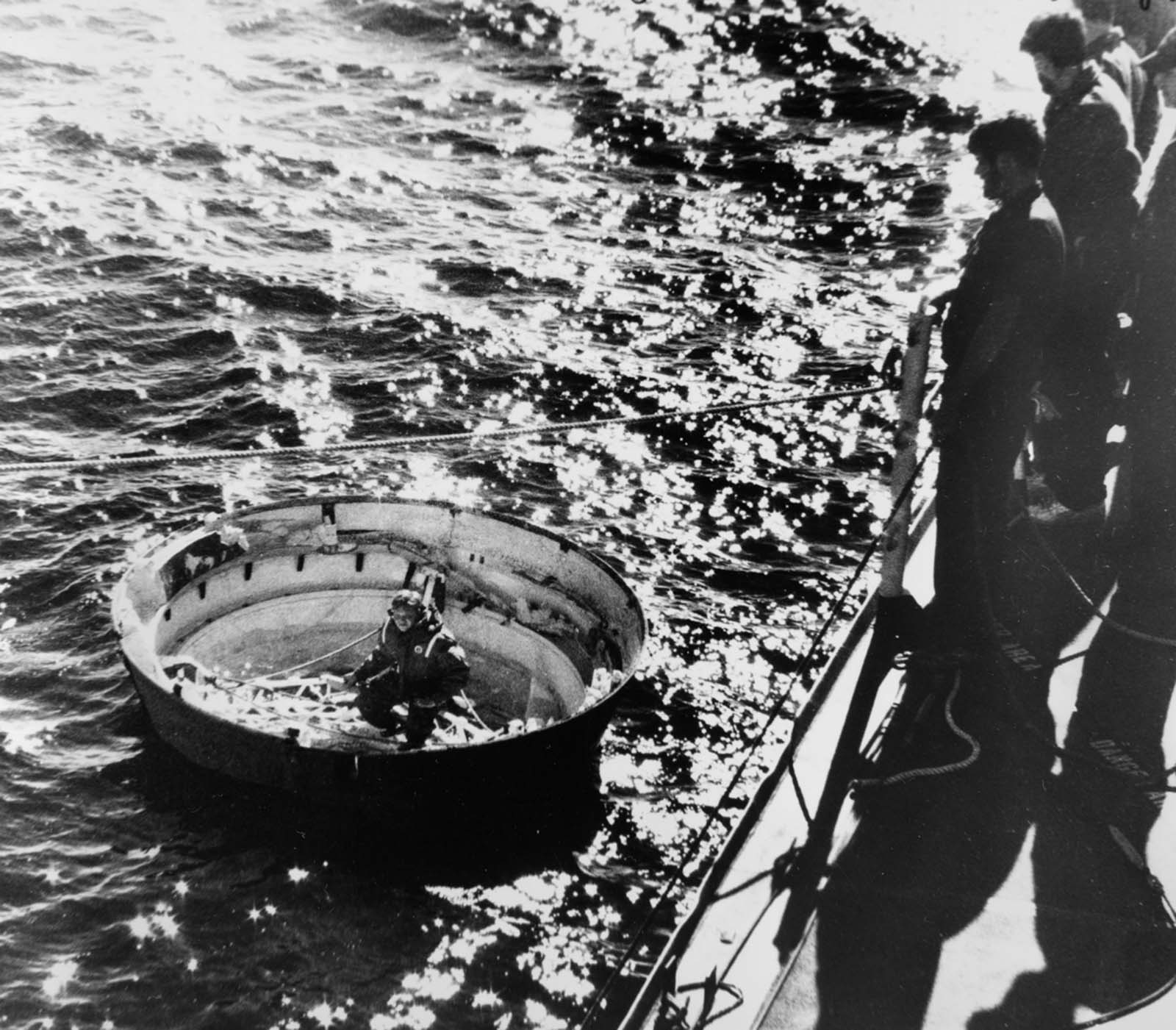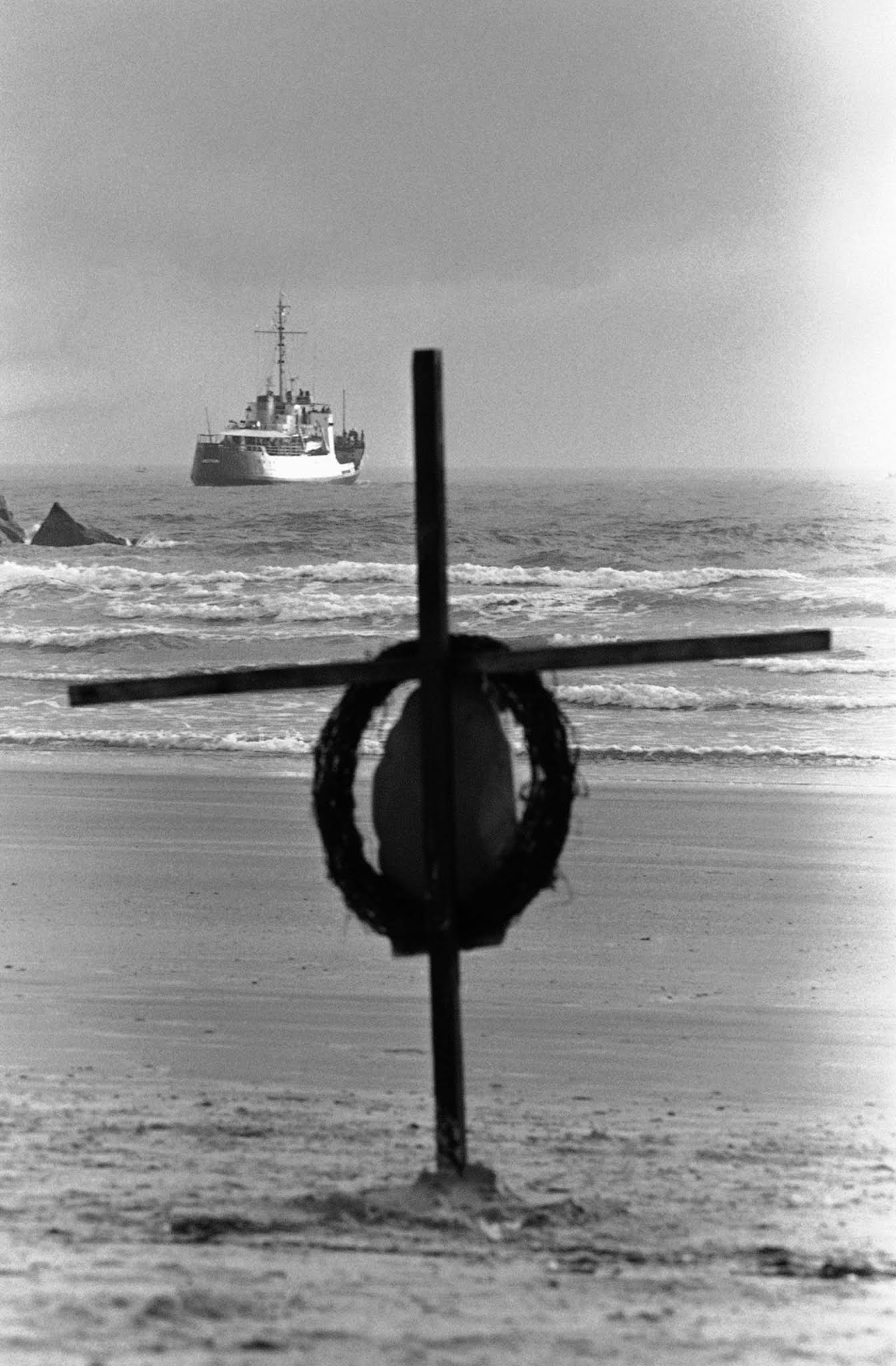A crew of seven was assigned to the spaceship. Commander Richard Scobee, Pilot Michael Smith, and Mission Specialist Ellison Onizuka, Judith Resnik, and Ronald McNair were astronauts. Gregory Jarvi, an aerospace engineer, and Christa McAuliffe’s assignment, a teacher from New Hampshire, were payload specialists. Although shuttle launches were considered so routine that network television no longer broadcast them, there was special interest in this one because a teacher — the first private citizen to go into space — was on board. Christa McAuliffe, the high school social studies teacher, had been chosen from among eleven thousand applicants and was scheduled to teach several lessons during the flight. Students at all grade levels were looking forward to them, and busloads of children had been brought to the viewing area to see the launch, along with many others who were watching from their classrooms via television. There were concerns in the Mission Control Center. They had asked for three ice inspections of the rockets and the shuttle Challenger. The third inspection, shortly before launch, showed the ice had melted onto the launchpad. The flight had been postponed six times due to bad weather and mechanical issues. There had been another two-hour delay earlier in the morning. A part of the launch processing system had failed during fueling. Like all space launches, this one was spectacular — the ship rose on a raring tower of flame, and bright rockets arced into a clear blue sky. But then something horrifying happened. Seventy-three seconds after liftoff, the rockets’ white vapor trail burst into huge billowing plumes branching off at odd angles. People who had observed previous launches were puzzled, but cheering from the crowd continued until it was abruptly silenced by an announcement over the loudspeakers: “Obviously a major malfunction”- and, after a pause, “we have a report from the Flight Dynamics Officer that the vehicle has exploded.” Later, experts learned that the Challenger had not exploded, although most media continued to say that it had; actually, it had disintegrated due to aerodynamic forces after a fire caused by the cold weather’s effect on a poorly-designed joint seal that damaged one of the solid rocket boosters. But from below, it looked like an explosion, and the outcome was equivalent. All seven members of the crew were killed. Tapes salvaged from the wreckage showed that the instant before breakup Smith said “Uh-oh,” but nothing else was heard. Debris rained into the Atlantic Ocean for more than an hour after the explosion; searches revealed no sign of the crew. These were the first deaths to occur during a US space flight. Three astronauts had died by fire nineteen years earlier in a capsule test on the ground, but there had been nearly twenty-five years of space flight, fifty-five US missions in a row, without a single in-flight fatality – an almost miraculous record. Challenger broke up in the explosion, but the forward section with the crew cabin was severed in one piece; it continued to coast upward with other debris, including wings and still-flaming engines, and then plummeted to the ocean. It was believed that the crew survived the initial breakup but that loss of cabin pressure rendered them unconscious within seconds since they did not wear pressure suits. Death probably resulted from oxygen deficiency minutes before impact. The failure was caused by the failure of O-ring seals used in the joint that were not designed to handle the unusually cold conditions that existed at this launch. The seals’ failure caused a breach in the solid rocket booster (SRB) joint, allowing pressurized burning gas from within the solid rocket motor to reach the outside and impinge upon the adjacent SRB aft field joint attachment hardware and external fuel tank. This led to the separation of the right-hand SRB’s aft field joint attachment and the structural failure of the external tank. Aerodynamic forces broke up the orbiter. The public, unlike the astronauts and others knowledgeable about space technology, had come to believe that going into space was safe. And so people reacted not only with grief but with shock. The nation and much of the world were stunned by the accident. Children who saw it on live TV were devastated. For days-and in some cases years afterward, many Americans were deeply upset, far beyond the sorrow felt for victims of other disasters. Twenty-something years later an editorial in the North Carolina newspaper Mount Airy News summed up a view that is often expressed throughout the United States: “I think when that shuttle flight ended, when McAuliffe and the other astronauts died… something was lost in our nation. Space was no longer the final frontier, something to be explored and tamed. It became a dangerous place, empty, and the value of exploring it became an empty promise, that couldn’t possibly live up to the danger or expense.” (Photo credit: AP / NASA / Getty Images / Article based on The Challenger Disaster – Perspectives on Modern World History) Notify me of new posts by email.
Δ Subscribe
